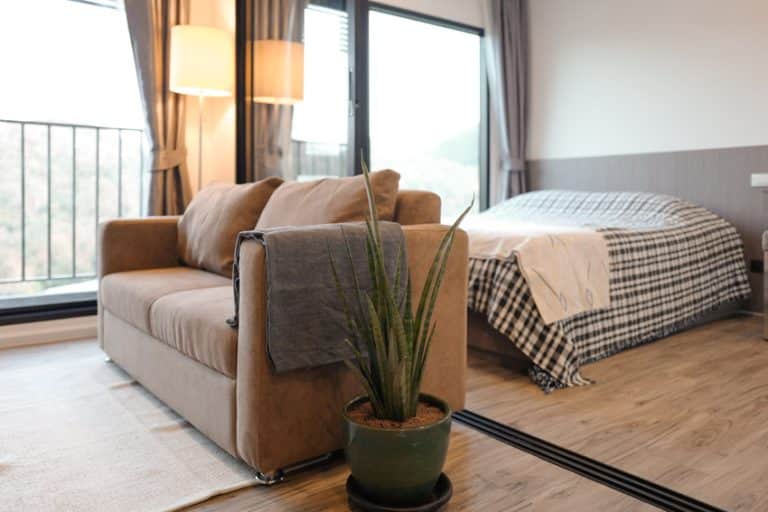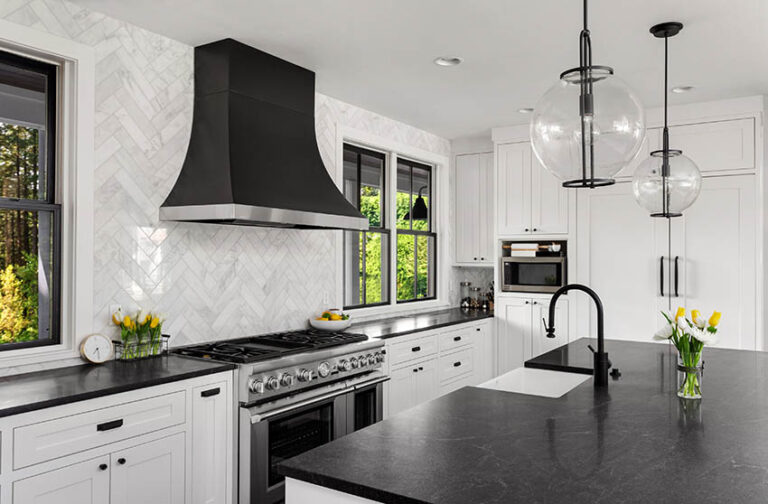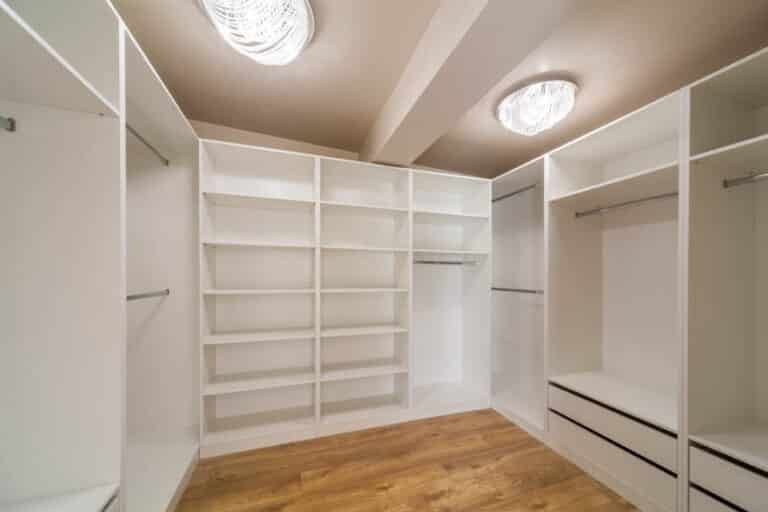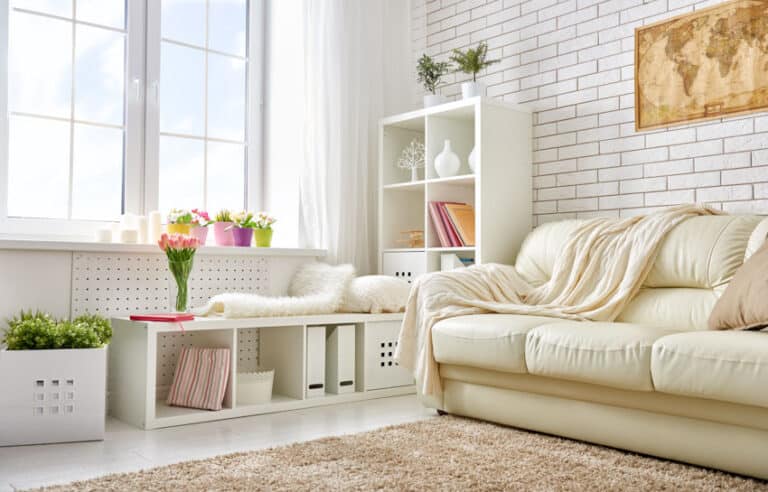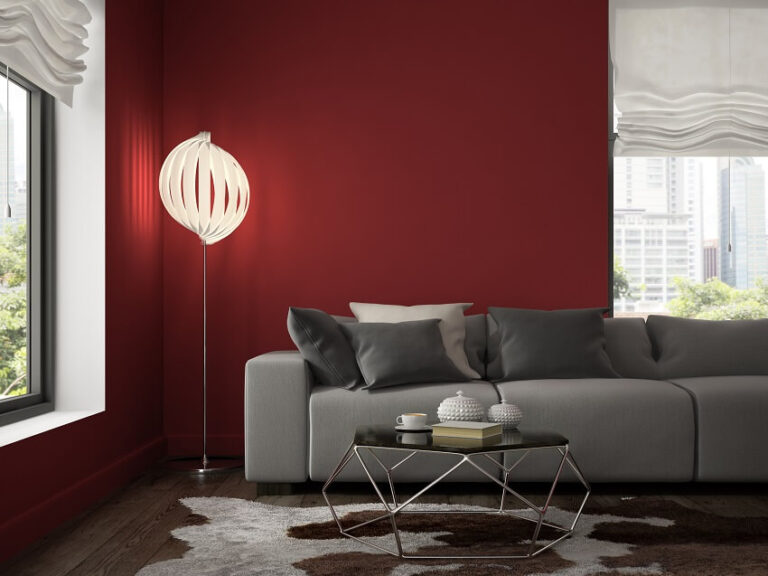Granite Flooring: Is It Really Worth The Money? Pros and Cons Revealed
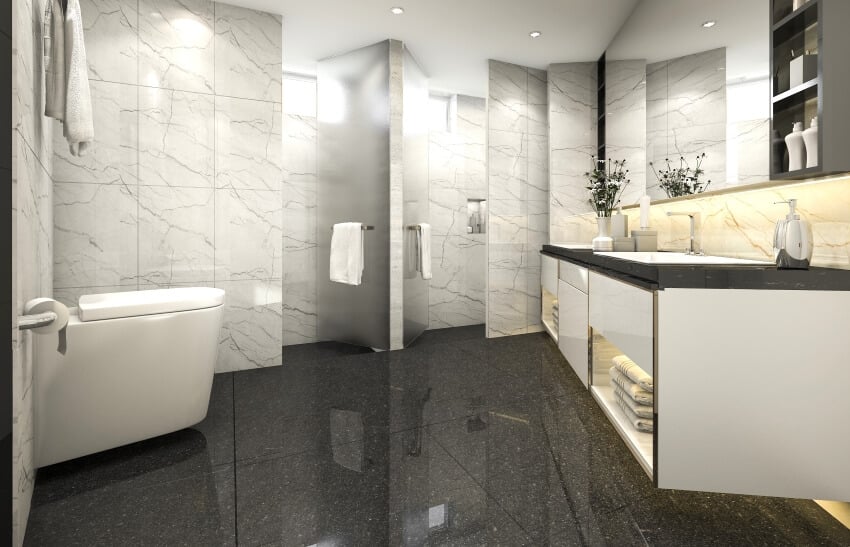
Natural stone flooring has always been regarded as a high-class material because of its distinct beauty and elegance. Granite is one of the most durable construction materials among these stones.
More commonly used as a countertop for kitchens, granite can also be used as flooring for any type of space. Granite is a perfect choice if you want a good investment that is attractive, long-lasting, and strong.
Below, we give you our very own guide on granite flooring. Read on to learn more about their greatest qualities, weaknesses, and costs, and learn tips on how you can keep them looking their best.
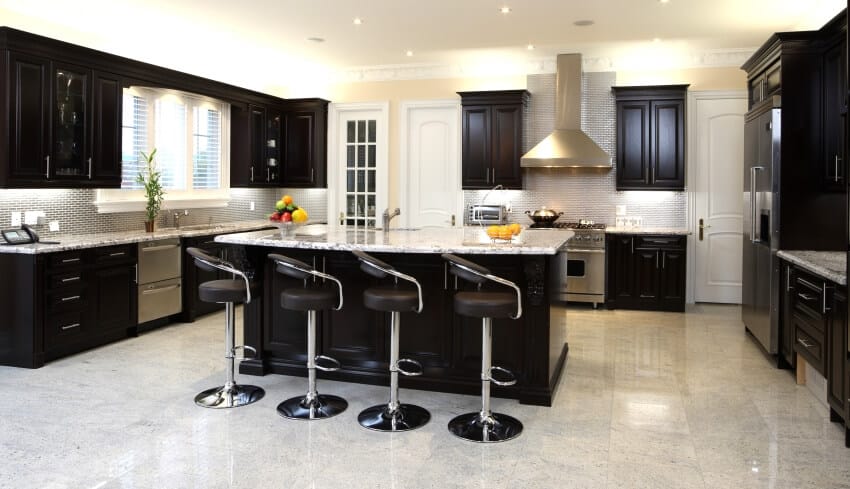
Granite is a type of igneous rock that is formed when magma crystallizes slowly under the ground. It is mainly composed of minerals like quartz and feldspar which gives it a grainy appearance. Other minerals can also be found in granite and these elements contribute to its unique pattern of metallic flecks and specks.
Granite flooring is granite that is processed and smoothed out to become slabs or tiles for interior and exterior applications.
Pros And Cons of Granite Tile Flooring
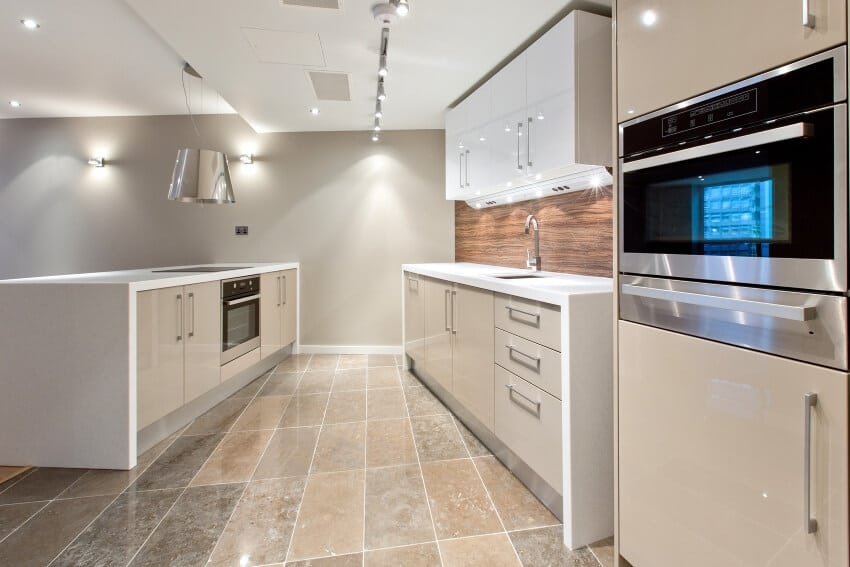
Although granite flooring has some drawbacks, the benefits outweigh its weaknesses. Here are some of the best qualities that granite flooring has to offer:
Pros of Granite Flooring
• It is exceptionally durable and long-lasting – Granite’s impressive durability makes it an excellent option as a flooring material. Granite flooring can outlast other popular materials including natural stone like marble and slate.
• It is extremely beautiful – Granite’s distinct natural beauty is one of the main reasons people are drawn to it as a flooring material. Each slab of granite is unique and possesses a diverse pattern and design. Some slabs show metallic flecks that sparkle as light hits them, and when used as a flooring material, it gives a space a heightened visual effect.
• It is scratch-resistant – Granite is one of the hardest natural stones, making it less vulnerable to scratches, heavy foot traffic, and wear and tear.
• It is hypoallergenic – Unlike carpet flooring, granite does not harbor allergens and is suitable for people with allergies.
• It comes in a wide variety of colors and options – Granite comes in a wide range of patterns and colors like white, black, beige, brown, blue, and red. Because of the numerous granite colors and options available, you can choose the perfect granite that matches your personal taste and your home’s existing style.
• It is resistant to stains – It is also resistant to stains, spilled liquids, and even some acidic substances.
• It makes a great option for wet areas – When properly sealed, granite flooring is very resistant to moisture and is suitable for use in bathrooms and kitchens.
• It is an excellent insulator – Granite flooring provides good thermal insulation and is well-suited for radiant in-floor heating.
• It is easy to maintain – Simple sweeping and occasional mopping are all you need to keep granite floors looking their best.
• It adds real estate value to your home – Potential buyers are more drawn to natural stone flooring and in addition increases the resale value of your home. Granite flooring proves to be an excellent investment.
Cons of Granite Flooring
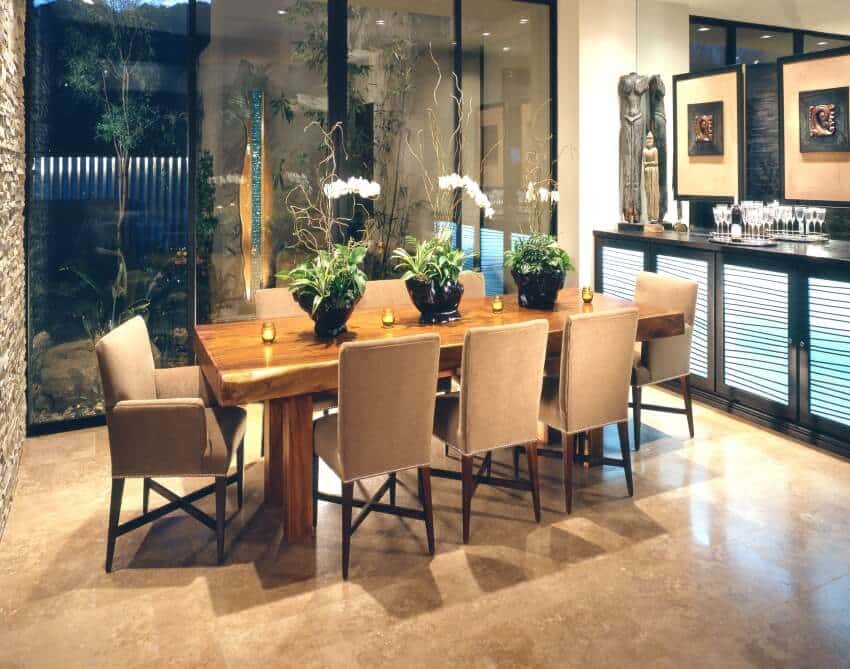
• It needs to be sealed and resealed periodically – Although easy to clean on a day-to-day basis, granite requires periodic sealing to protect it from moisture. Sealing needs to be done on an annual basis, and this translates to additional maintenance costs.
Granite Designs Used for Flooring
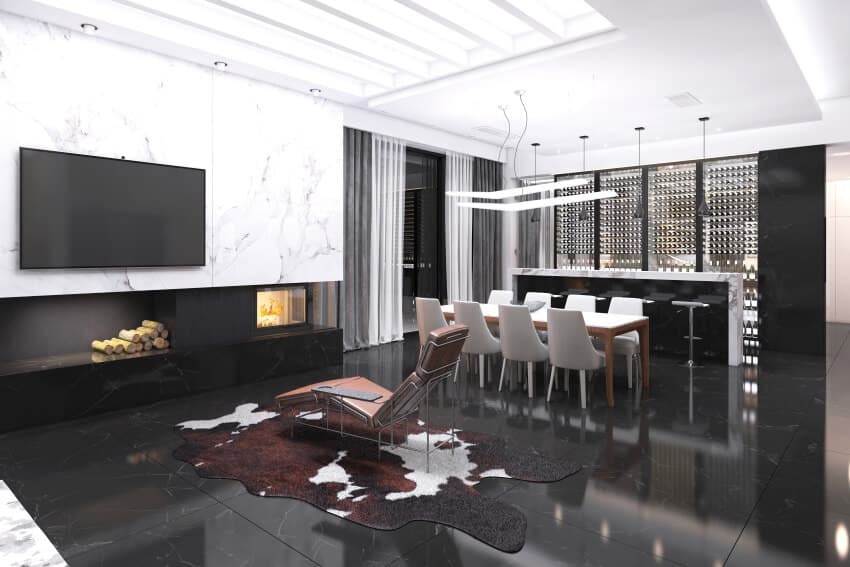
One of the best things this flooring has to offer is high customizability. Whether you use slabs or tiles, granite flooring can be laid out in different designs and patterns, depending on the look you want to achieve.
The most common design is the square set pattern or grid pattern. This design makes use of tiles that are set in a square with corners. This layout is the easiest to install because it requires the least number of cuts.
It also costs less in terms of labor. You can use this design if you want a simple or seamless design, especially if you are only using one color. However, if you want to add more visual interest, you can experiment with the design by incorporating strips, adding an accent, or using two or more colors to produce color blocking.
Flooring designs can also include geometric shapes and other customized motifs. This creates a more dynamic look for a space.
This also provides a great way to add a focal point to your flooring. Suppliers can incorporate any shape or design into your flooring using custom stone cuts. Although more tedious to produce and install, the resulting look is truly unique and interesting.
Granite Tiles for Floors
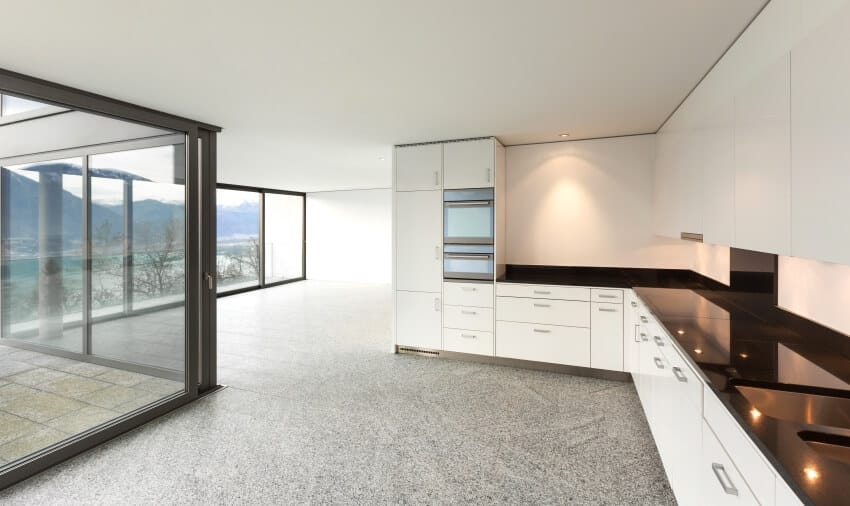
Granite tiles are pre-cut square or rectangular pieces obtained by processing small blocks of the stone. The most popular tiles are from India and China and are not only used for flooring but also for wall finishes and countertops as well.
Standard Sizes. The standard sizes for tiles are 30×30 centimeters, 60×60 centimeters, 120 x 120 centimeters, and 60 x 120 centimeters, although you can have custom cuts of 30×60 centimeters from some manufacturers. You can also ask suppliers to make other custom sizes based on your requirements.
Standard Thickness. Tiles are available in standard thicknesses of 3/8, ½, and even ¾ inches. The thicker the tiles are, the stronger they are, the better the quality, and the longer the lifespan. However, it is more expensive. Thicker tiles are suitable for heavy loads and high-traffic areas.
Applications. Small-size tiles such as 30 x 30 centimeters and 30 x 60 centimeters are good for small areas like bathrooms; bigger types of floor tiles are more suitable for large spaces like living rooms.
Finishes. The floor tiles are available in different finishes, namely polished, honed, flamed, leathered, and bush hammered.
Polished floor tiles are those that have a glossy sheen.
Honed finish has a non-reflective feel. See examples of honed granite here.
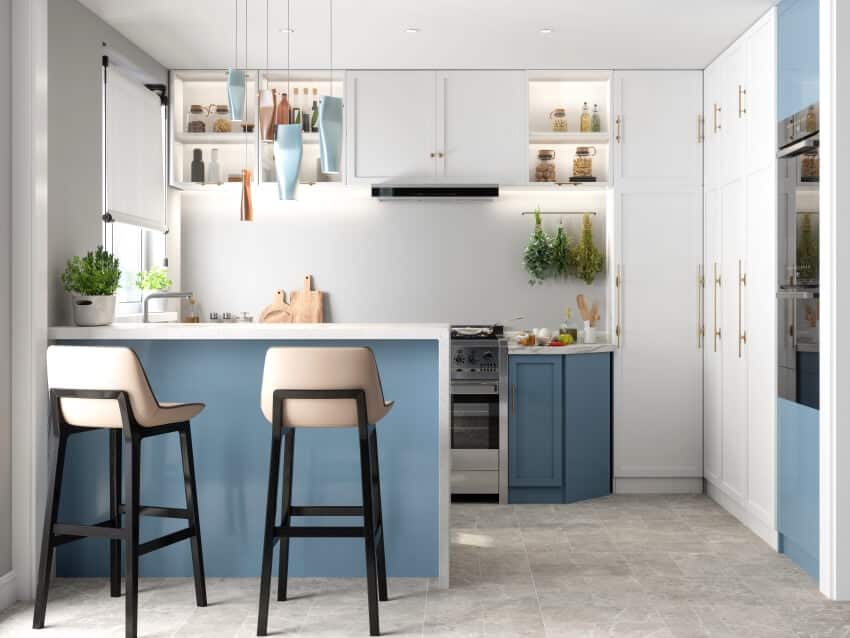
It is ground down smooth to produce a matte finish that creates a softer feel than polished tiles.
Leathered finish has a soft sheen that is less reflective than the polished variety. The textured appearance of leathered granite offers subtle dimple-like impressions, which are made by running diamond-tipped brushes on the surface.
Flamed finish has a coarser texture and rougher appearance. This is made by firing the stone at extreme temperatures, causing the surface to break.
Bush hammered finish also has a rough texture — almost similar to the stone’s natural coarse texture. Compared to a flamed finish, bush-hammered granite has deep pockets and ridges.
Popular Tile Colors. There are hundreds of colors and patterns you can choose from, but the most popular ones used for tiles include Black Galaxy, Absolute Black, Black Marquino, Tan Brown, Steel Gray, Rajasthan Black, and Red Multi.
Granite Slab for Flooring
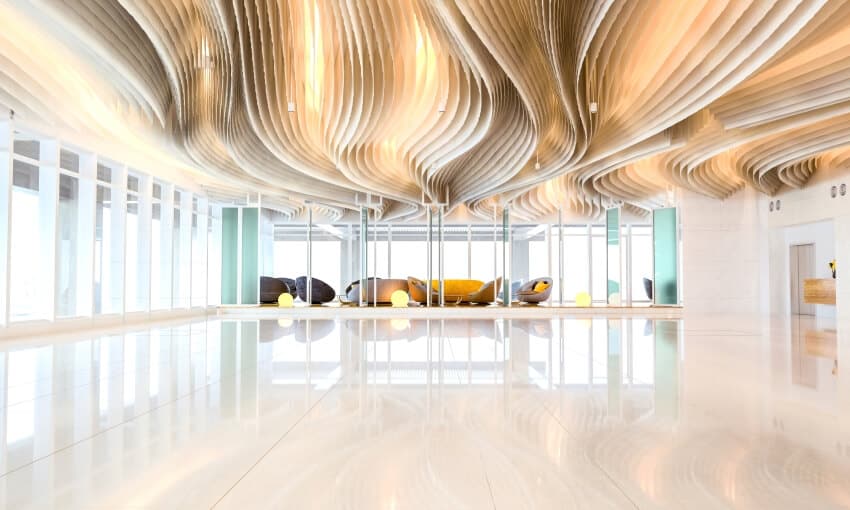
Another alternative to tiles is slabs. You can use these slabs for flooring, but they can be very challenging to install in any setting. Because of their size and heavy weight, they are much harder to handle.
However, as a flooring material, they are considered one of the most durable options. When properly installed, the slab flooring is long-lasting and can withstand fires and other forces of nature.
These slabs can be cut to size and are considered a premium material compared to tiles. The average price for slabs ranges from $80 to $150 per square foot for the material. The labor cost is also a bit more expensive because of the complexity of the process.
These slabs for flooring are typically thicker than tile forms. A slab piece can range from ¾ inch to 3 inches thick. You may visit our granite slab size guide for more information.
In terms of installation, the slab is placed on top of 2 to 3-inch thick deck mud, depending on how uneven the slab is. So, in total, the estimated thickness of these slab floors will be about 4 to 5 inches when finished.
When installing the slabs for flooring, make sure that the surface is primed well with a slurry so the deck mud can adhere properly. Although there will be no grout lines, there will be expansion joints in between the slabs to allow for movement. The gaps or spaces between the slabs can be filled with caulk or epoxy to create a more seamless look.
Cost of Granite as Flooring Material
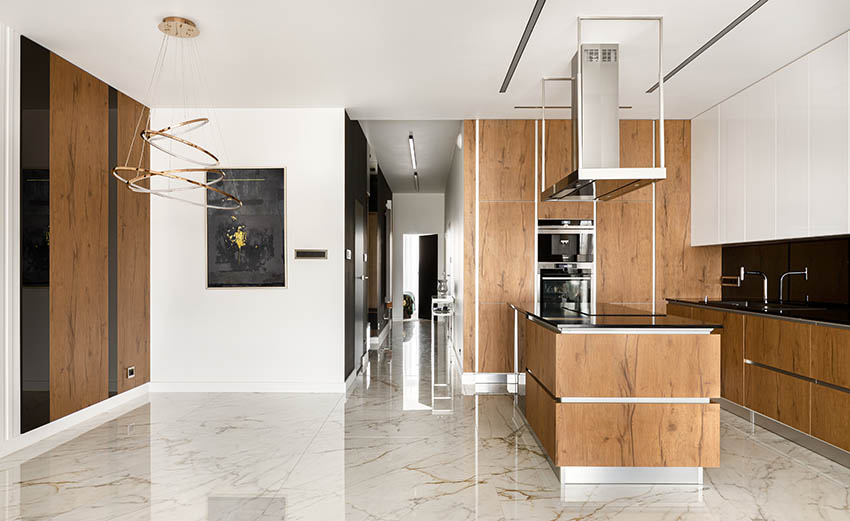
The cost of this flooring costs around $2.50 to $5.00 per square foot for the tile form. Expect to pay more for high-end types at $6 to $15 or more per square foot.
Installation of this flooring costs more than other flooring materials and runs anywhere between $3 to $6 per square foot for the labor alone. So, in total, this material, when installed, is roughly around $6 to $20 per square foot, depending on a number of factors. Larger than-average tiles tend to cost more because they are harder to handle and install.
Other factors that affect the cost of the material include its grade, color, complexity of the project, size of the space, etc.
Factors That Affect The Cost Of Granite
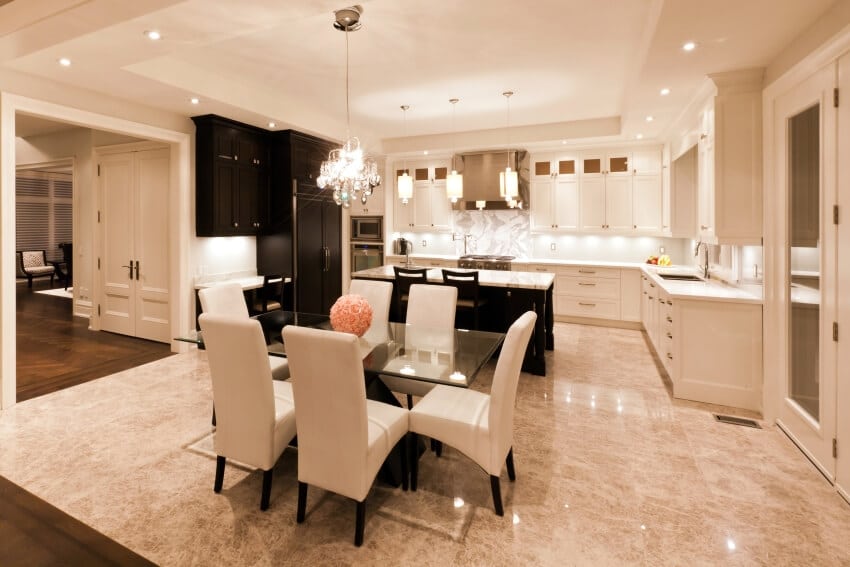
Grade – This flooring comes in three grades, namely, low-grade, mid-grade, and high-grade granite.
• Low-Grade Granite – Also known as “level 1”, this is an entry-level grade and is typically pre-fabricated with a thickness of 3/8 inches. Because it is lightweight, low-grade variety is the easiest to install and costs less in terms of labor. However, it needs a reliable substrate to reinforce its strength and stability. The low-grade type typically costs $2 to $6 per square foot.
• Mid-grade granite – Considered as “level 2”, this is thicker at ¾ inches and offers more durability. They cost $5 to $15 per square foot.
• High-Grade Granite – Considered level 3 and above, this is the finest and has the best quality. Its thickness starts at ¾ inches but can double depending on the requirement.
It is exceptionally durable and comes in a variety of patterns, colors, and unique designs. It is the most expensive type and costs around $15 to $40 per square foot.
Custom Borders – If you want to add custom borders and inlays to your flooring, it will raise the total cost of your project. For a 10×10 square foot area, a custom border will cost an average of $200 to $600, depending on the design and materials used. The more complex the design is, the higher the cost.
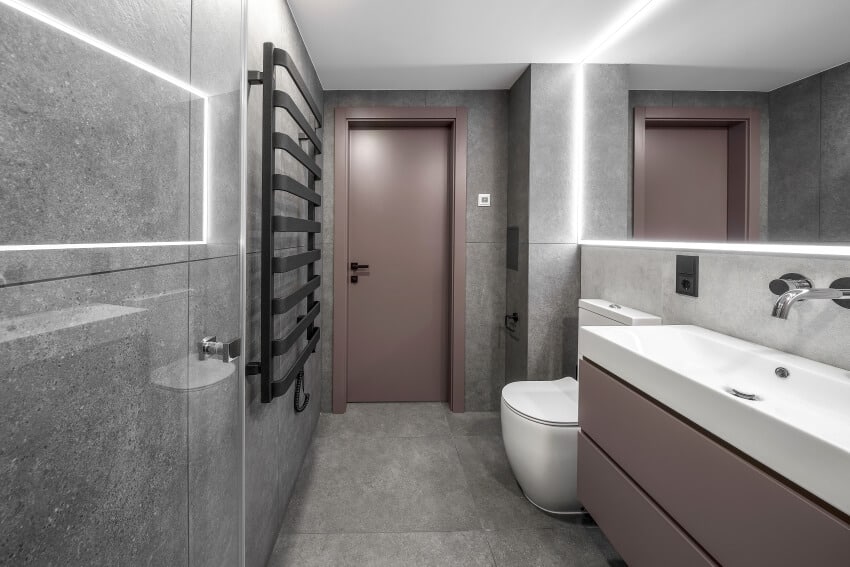
Special Colors and Designs – Special and more exotic colors cost more at $10 to $40 per square foot. Examples of special and rare colors include blue, red, and purple.
The most expensive type is the blue variety, like Azul Aran, Blue Bahia, and Van Gogh granite. They are in the high-end range because of their rarity and highly desirable looks.
Van Gogh granite costs a whopping $300 to $400 per square foot and features a breathtaking pattern of swirls of deep blue, green, white, and gold.
Finish – The flooring comes in several types of finishes, including polished, honed, brushed, and flamed. Most people would think that the polished variety is more expensive than other finishes because of the grinding process. However, the honed variety has the highest price point because of its availability.
Floor Pattern or Layout – The tile form flooring may be installed in a straight or diagonal pattern, depending on your taste. Straight tile patterns are easier to install and thus cost less in terms of labor and materials.
Diagonal patterns raise the costs higher because they are more complex to install and require trimming diagonal tiles at 45-degree edges.
Size of the Area – The biggest cost factor in for this flooring is the size of the space. The bigger the space, the more materials and labor it requires.

